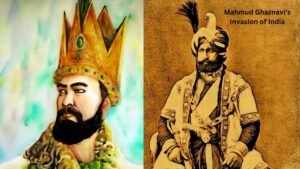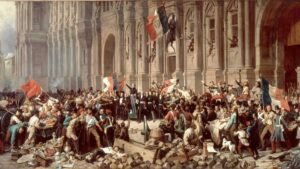Mahmud Ghaznavi’s Invasion of India- Objective, Invasion, Evaluation
Mahmud of Ghazni – Sabuktigin had two sons: Mahmud and Ismail. Among them, Mahmud was the elder, and Ismail was the younger. Sabuktigin had a greater affection for his younger…
Delhi fashion influencer Nancy Tyagi dazzles in self-stitched 20kg gown for Cannes debut
Nancy Tyagi, a Delhi-based fashion influencer, glammed up in a pink gown that she created all by herself for her debut on the Cannes 2024 red carpet. In Short Delhi-based…
Greta Thunberg Life and Activities
Greta Thunberg: Advocating for climate action Born on January 3, 2003, in Stockholm, Sweden, Greta Thunberg is a Swedish environmentalist dedicated to addressing the challenges of climate change. In 2018,…
Revolutions in France 1789: History, Causes, Events and Results
Revolutions in France in 1789, which commenced in 1789 and were completed in the late 1790s with the rise of Napoleon Bonaparte, positioned as a significant defining moment in worldwide…
When is World Sleep Day 2024: History, Date, Significance, Theme, and Activities
World Sleep Day 2024 Today marks World Sleep Day, celebrated on March 15, 2024! From delegates to sleep health advocates worldwide, individuals are actively engaging in various initiatives within their…
Who is Krystyna Pyszkova? Interesting facts about Miss World 2024
Krystyna Pyszkova – Krystyna Pyszkova from the European country Czech Republic won the title of Miss World 2024 by defeating more than 100 world beauties. This time the Miss World…
Who is Rupert Murdoch- Early Life, Age, Career, Fifth Marriage and Net Worth 2024
Rupert Murdoch, whose real name is Keith Rupert Murdoch, was born on 11 March 1931. He is an Australian-born American business tycoon, shareholder, and media corporation proprietor. His commerce extends…
Camila Cabello Height, Age, Weight, Wiki/Bio, Husband/Boyfriend, Parents, Instagram, Net Worth and More
Karla Camila Cabello Estrabao, known professionally as Camila Cabello, is an American singer and songwriter who has captivated audiences worldwide with her mesmerizing vocals and compelling lyrics. Born on March…
Colin Allred Biography 2024- Early Life, Education, Career, Age, Height, Weight, Wife, Mother, Father and Latest News
Colin Zachary Allred, born April 15, 1983, is a prominent American politician, lawyer, and former professional football player. As a member of the Democratic Party, he currently represents Texas’s 32nd…
What is Communal Awards & Poona Pact 1932
Communal Awards & Poona-The Communal Award aimed to allocate separate electorates in British India for various communities including Forward Caste, Lower Caste, Muslims, Buddhists, Sikhs, Indian Christians, Anglo-Indians, Europeans, and…



